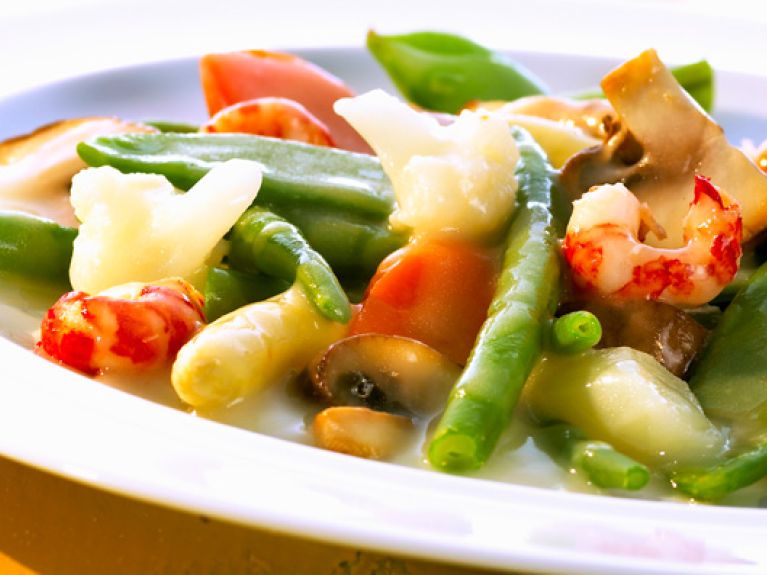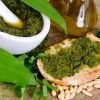A taste of Germany

Young chefs are reinterpreting good traditional fare, for regional ingredients and dishes are in demand. A few classics:
Kale and sausage
People like to associate the Germans with sauerkraut. In Northern Germany, however, another sort of cabbage is extremely popular: kale. The harvest begins in winter, when the first frost has covered the bushy plants. Around Bremen, Hanover and Oldenburg traditional kale eating tours are organized. The classic recipe is kale with groats sausage, a smoked sausage. For this home-style cooking, kale is cooked with groats, lard, onions and the sausages for up to 90 minutes. This form of preparation is looked upon as exotic even in other regions of Germany. But there have long been other recipes that cook the kale more gently, for it is unbeatably rich in vitamins.
Broad beans and pork fat
In the west of Germany there is also a dish that combines an extremely nutrient-rich, healthy vegetable and calorie-rich meat. Here “broad beans and pork fat” is a classic. The board beans are in season from June to August, because they taste good only when young. In the traditional variant, they are cooked and served with pork fat. But here too there have long been slimmed-down versions, and even a vegan broad bean paste.
Leipzig mixed vegetable stew (Leipziger Allerlei)
East Germany shines with Leipziger Allerlei. The dish was first mentioned in writing in Susanna Eger’s Leipzig cookbook of 1745. The Saxon cook noted that the recipe combines the best of field, water and forest. It consists of young peas, carrots, asparagus and morels. Sometimes green beans, cauliflower and kohlrabi can be added. Ingredients of the traditional Leipziger Allerlei also include crayfish, crayfish butter and bread dumplings. This classic dish has nothing in common with the canned mixed vegetables that sometime goes under the same name.
Swabian pockets (Maultaschen)
Southern Germany is the home of Maultaschen, those little bags of dough with a filling of sausage meat, spinach, onion and soaked bread. The Swabians maintain that it originates in their region, but Maultaschen are also a traditional dish in the neighbouring regions of Baden and Bavaria. The term “Swabian Maultaschen” has been an EU protected designation of origin since 2009. Variants of the dough pocket, however, exist all over the world: for example, the Italian ravioli, Polish pierogi and Chinese wonton.
Taste Days in Germany, 26 September to 5 October 2014
© www.deutschland.de

